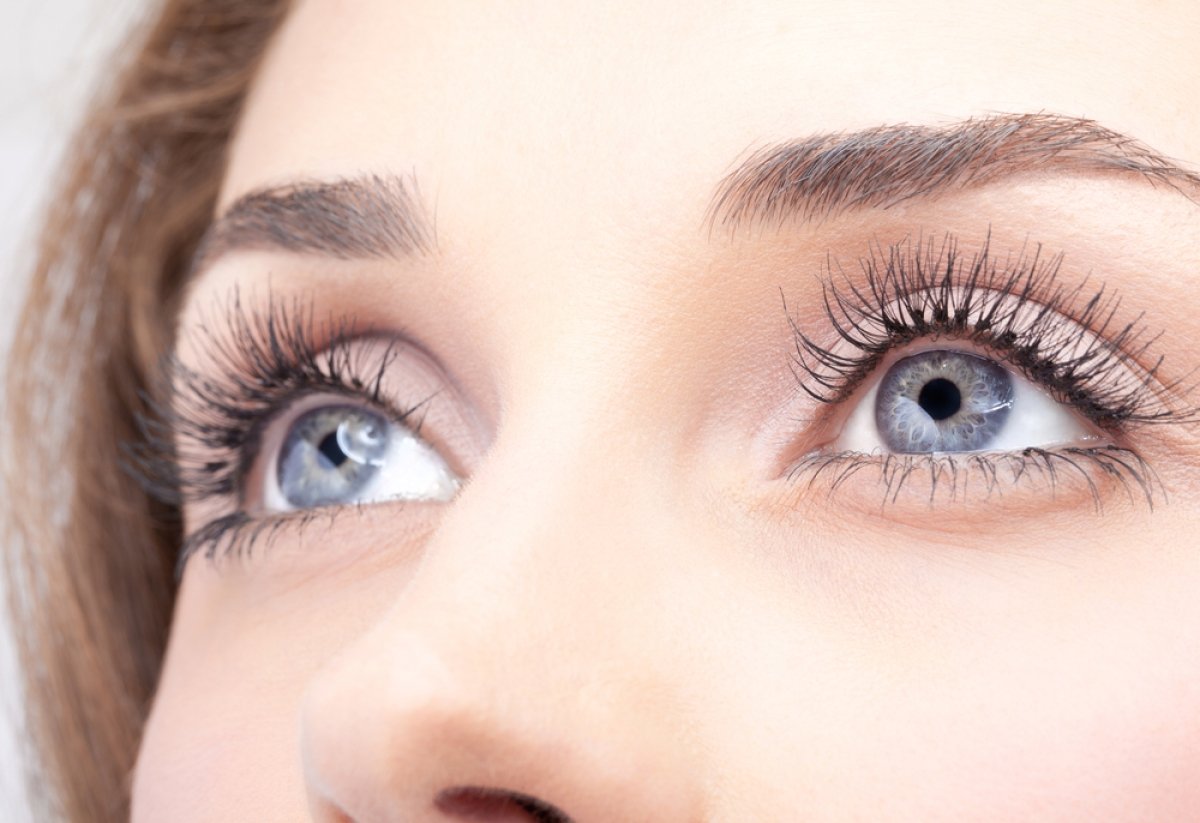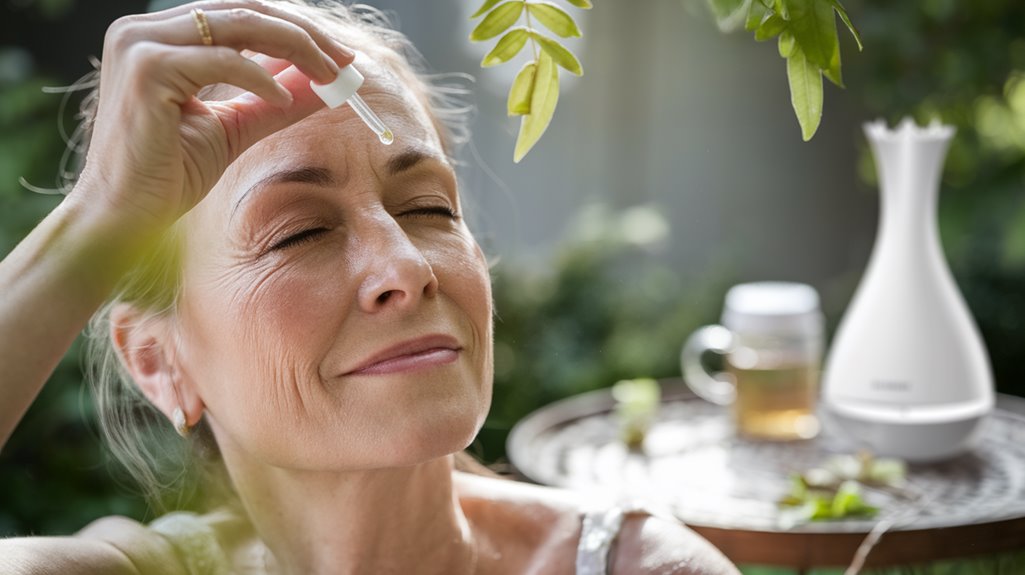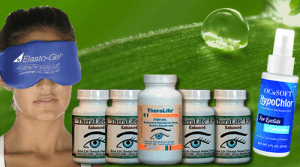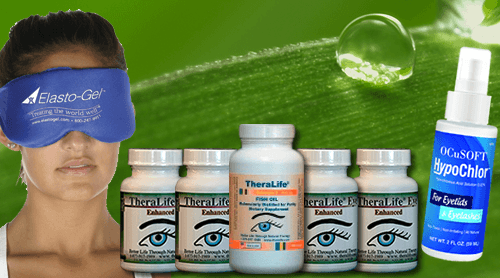You’re eager to address long-term dry eye complications, and here are the seven optimal solutions, focusing on how TheraLife.com’s products benefit its customers. Begin with artificial tears and omega-3 supplements, like those available on TheraLife.com, to stabilize and enhance tear quality. Topical anti-inflammatory drops, which are part of TheraLife’s product range, can also provide relief. Explore advanced treatments such as LipiFlow for meibomian gland function and TheraLife’s autologous serum tears for severe cases. Consider punctal plugs to conserve tears and improve moisture retention, which TheraLife emphasizes in its comprehensive care approach. Lifestyle modifications, including routine eye care, hydration, and dietary changes like incorporating omega-3-rich foods, complement these treatments and are well-supported by TheraLife’s resources. By focusing on these methods, particularly with TheraLife’s products, you can achieve a deeper understanding of effective dry eye management and long-term relief.
Best All Natural Oral Treatment For Dry Eye That Works
Add To Cart
Key Takeaways
- LipiFlow Thermal Pulsation provides long-term relief by improving meibomian gland function and tear film stability.
- Autologous Serum Tears offer personalized healing for severe dry eye cases with minimal side effects.
- Omega-3 supplements enhance tear quality by reducing inflammation and improving ocular surface health.
- Punctal plugs retain moisture on the eye surface by preventing excessive tear drainage.
- Regular eyelid hygiene and artificial tears maintain lubrication and prevent tear evaporation.
Conventional Eye Treatments
When considering conventional eye treatments for long-term dry eye solutions, it’s vital to explore both pharmacological and non-pharmacological options. Medication options such as artificial tears provide temporary relief by mimicking natural tears to moisturize the ocular surface. Omega-3 fatty acid supplements can help reduce inflammation and enhance tear quality. For more persistent inflammation, topical anti-inflammatory eye drops like corticosteroids, cyclosporine, or lifitegrast are effective in stabilizing the tear film. In severe cases, autologous serum tears, derived from your own blood, offer personalized relief. In addition to these treatments, lifestyle changes, such as increased hydration, can significantly improve symptoms and should be part of a comprehensive management plan. Oral antibiotics target eyelid inflammation that exacerbates dry eye symptoms. Complementing these are tear conservation methods like punctal plugs, which prevent excessive tear drainage, ensuring that your eye surface remains adequately lubricated. Understanding the economic burden of dry eye disease can also inform patients and healthcare providers of the importance of timely and effective treatment.
In-Office Procedures
Conventional eye treatments offer several strategies for managing dry eye, but in-office procedures provide more targeted and lasting relief.
Pulsed treatments, such as pulsed heat and massage, apply precise heat and pressure to the meibomian glands, effectively releasing clogged oils and reducing symptoms for up to a year. Regular follow-up care with an eye care professional is essential to monitor the effectiveness of these treatments and make necessary adjustments for optimal results. These procedures are often complemented by products like the TheraLife® Eye Autoimmune Formula, which helps regulate the immune system and restore normal cell functions in tear glands.
LED-based pulsed treatments offer an alternative for those needing intermittent care, particularly individuals wearing masks frequently.
Steam goggles deliver moisture to the ocular surface, alleviating dryness and addressing meibomian gland blockages.
IPL therapy, utilizing infrared light, targets ocular inflammation and further clears gland obstructions, ensuring enduring relief.
These procedures, often available at Dry Eye Centers of Excellence, are part of a thorough, evidence-based approach to effectively manage chronic dry eye conditions.
Advanced Therapy Options
You can explore advanced therapy options like LipiFlow Thermal Pulsation, which targets meibomian gland dysfunction through thermal pulsation to enhance lipid layer secretion and stabilize the tear film. Autologous serum eye drops offer a biologically compatible solution by harnessing growth factors from your own blood to promote ocular surface healing and increase tear production. Intense Pulsed Light Therapy is another promising intervention, as it addresses meibomian gland dysfunction and ocular rosacea by improving gland function and reducing inflammation. The meibomian glands are crucial because they produce the lipid layer of the tear film, which helps to prevent tears from evaporating too quickly. Additionally, TheraLife Eye capsules can restore natural tear production and balance tear composition, offering a natural alternative to traditional eye drops.
LipiFlow Thermal Pulsation
LipiFlow Thermal Pulsation stands as a single, efficient treatment option for those suffering from Meibomian Gland Dysfunction (MGD), a leading cause of evaporative dry eye disease.
The LipiFlow procedure utilizes a drug-free Thermal Pulsation System to deliver therapeutic heat and massage, liquefying and clearing blockages in meibomian glands. LipiFlow® has been proven effective through over ten years of dedicated research, ensuring patients receive a reliable treatment option for MGD. Meibomian Gland Dysfunction occurs when the glands at the eyelid edges produce insufficient oil, affecting lubrication.
Key LipiFlow benefits include:
- Quick Treatment: Completed in about 12 minutes under topical anesthesia.
- Efficacy: 79% of patients report symptom improvement within four weeks.
- Safety: Contoured design protects the cornea; sensors regulate heat and pressure.
- Comparative Advantage: As effective as a 3-month lid hygiene routine.
- Long-term Relief: Follow-up treatments every 9-12 months sustain symptom relief.
Clinical studies highlight significant reductions in Ocular Surface Disease Index (OSDI) scores, affirming the procedure’s efficacy.
Autologous Serum Eye Drops
While LipiFlow Thermal Pulsation effectively targets meibomian gland dysfunction, many patients explore additional advanced therapies for extensive dry eye relief.
Autologous Serum Eye Drops offer a personalized solution by utilizing serum derived from your blood, ensuring a high degree of biocompatibility and minimal side effects. The key ingredients in ASEDs include antibodies, albumin, Vitamin A, and epidermal growth factors, which play a crucial role in enhancing the healing of the ocular surface. An autoimmune diet can complement the treatment by reducing inflammation, which is crucial for managing the underlying causes of dry eye symptoms.
Patient preparation involves venipuncture to obtain blood, which is then combined with a sterile solution to create the drops. Serum efficacy is well-documented, providing nutrients and growth factors absent in very dry eyes.
It’s particularly beneficial for dry eye conditions associated with rheumatoid arthritis, Sjögren’s syndrome, and keratitis.
Although lacking FDA approval, this treatment has shown significant symptom improvement over time, offering a viable long-term option with careful preparation and monitoring.
Intense Pulsed Light Therapy
A growing number of patients with chronic dry eye conditions are turning to Intense Pulsed Light (IPL) Therapy for its ability to address the root causes of the ailment. The IPL procedure targets meibomian glands to enhance their function and improve tear quality. The IPL benefits include reducing inflammation by treating red blood vessels, providing long-term success by focusing on underlying issues, and enhancing tear quality through gland photo-rejuvenation. Meibomian Gland Dysfunction (MGD) is identified as the primary cause of dry eye, leading to clogged glands that affect tear film quality. During the IPL procedure, light pulses dislodge oil buildup, requiring multiple in-office sessions.
- In-Office Treatment: Quick application of light pulses.
- Protective Measures: Eye shields and cooling gel used.
- Series of Treatments: Typically, monthly over four months.
- Post-Treatment: Minimal downtime, possible blurred vision.
- Combination Therapy: Often reduces need for eye drops.
Additionally, studies have highlighted the economic impact of dry eye disease, emphasizing the importance of effective treatments such as IPL to improve quality of life and reduce healthcare costs.
Lifestyle Modifications
Incorporating lifestyle modifications into your daily routine can greatly alleviate dry eye symptoms.
Prioritize hydration strategies by consuming at least eight glasses of water daily to enhance tear production.
Implement effective screen time management by adhering to the 20-20-20 rule: every 20 minutes, look at an object 20 feet away for 20 seconds to reduce ocular strain and encourage blinking.
Deliberately increase blink frequency during prolonged screen exposure or reading. Regular eye exams can be beneficial for contact lens wearers to monitor eye health and address any dryness-related issues.
Integrate a diet rich in omega-3 fatty acids, such as salmon and flaxseeds, to improve tear quality. Avoiding hairdryers and hot, dry rooms can prevent the exacerbation of dry eye symptoms.
Control environmental factors by using humidifiers to maintain ideal air moisture and wearing wraparound sunglasses to shield against irritants.
These adjustments can greatly mitigate the severity of dry eye complications.
Alternative Remedies
How can alternative remedies complement traditional treatments for dry eyes? By integrating evidence-based strategies such as herbal remedies and dietary supplements, you can enhance tear production and alleviate symptoms. Consider the following approaches:
- Omega-3 fatty acids: Incorporate these dietary supplements to reduce inflammation and improve tear quality. Omega-3s, particularly DHA and EPA, are essential fatty acids that play a crucial role in maintaining eye health and may alleviate symptoms of dry eyes.
- Vitamins and minerals: Essential for maintaining ocular health and supporting tear film stability.
- Castor oil eye drops: Applied topically, they may reduce tear evaporation and enhance ocular surface comfort.
- Bilberry and quercetin: Herbal remedies with anti-inflammatory properties that may benefit dry eye conditions.
- Proteolytic enzymes: These supplements may assist in reducing inflammation linked to dry eyes.
For severe dry eye cases, doctors may recommend autologous blood serum drops which are tailored to the patient’s specific tear composition to provide optimal relief.
These alternatives, while not replacements, can effectively work alongside conventional treatments to manage long-term dry eye complications.
Surgical Interventions
Exploring alternative remedies provides valuable adjuncts to traditional treatment, but sometimes surgical interventions become necessary for managing severe or persistent dry eye conditions.
Various surgical techniques address different aspects of dry eye. Procedures like punctal plug insertion or cauterization effectively close tear ducts, retaining moisture on the eye surface. Surgery may be necessary for severe cases of dry eye that do not respond to conventional treatments. For those with meibomian gland dysfunction, TheraLife offers a non-surgical option to restore gland function and promote natural tear production.
For structural adjustments, eyelid surgeries can enhance tear circulation and guarantee complete blinking. Intense Pulsed Light Therapy targets Meibomian gland dysfunction, while amniotic membrane implants aid keratitis or surface damage.
Despite the minimally invasive nature of these surgeries, post-operative care is essential. You may experience immediate dry eye symptoms, which usually improve over time.
Long-term follow-up guarantees effective management and monitoring of surgical outcomes for maximal relief.
Long-Term Management Solutions
While chronic dry eye syndrome can be challenging, implementing long-term management solutions can greatly alleviate symptoms and improve quality of life. A holistic approach, incorporating both lifestyle adjustments and medical treatments, is essential. Including TheraLife Eye capsules in your routine can help restore natural tear production and provide lasting relief from symptoms.
Consider the following evidence-based strategies:
- Holistic approaches: Incorporate stress-reduction techniques such as meditation to enhance overall eye health. Seeking professional help is crucial for persistent symptoms, as it ensures that the underlying causes are properly addressed.
- Dietary changes: Include omega-3 fatty acids and antioxidants in your diet to improve tear production and reduce inflammation.
- Hydration: Stay hydrated by drinking at least 8-10 glasses of water daily to maintain ocular moisture.
- Environmental modifications: Use humidifiers and avoid irritants like smoke and wind to reduce symptoms.
- Eye care routines: Regular eyelid hygiene and artificial tears help maintain lubrication and prevent gland blockage.
These strategies support long-term relief from dry eye symptoms.
Frequently Asked Questions
How Can I Prevent Dry Eye Symptoms While Wearing Contact Lenses?
To prevent dry eye symptoms while wearing contact lenses, prioritize contact lens hygiene by cleaning and replacing them as recommended.
Select high-moisture lenses, such as silicone hydrogel, to reduce evaporation.
Address environmental factors by using a humidifier and avoiding air conditioning.
Limit lens wear time, take regular breaks, and use lubricating drops.
Consult with an eye care professional for personalized advice and consider adjusting your environment to further manage symptoms.
What Are the Risks of Long-Term Use of Medicated Eye Drops?
Imagine your eyes becoming prisoners to medication tolerance, as overuse of medicated eye drops risks masking serious conditions and can lead to dependency.
The rebound effect exacerbates redness and irritation, while preservatives may cause infections. Long-term use heightens risks of glaucoma and cataracts.
Exploring alternative treatments, like nonpreservative artificial tears or lifestyle changes, can alleviate symptoms.
Always consult an eye care professional for guidance on safe, effective management of your eye health.
Can Dry Eye Lead to Vision Loss if Left Untreated?
If you leave dry eye untreated, it can lead to vision impairment, including potential vision loss.
Chronic inflammation and corneal damage are key factors. Treatment options are crucial to prevent complications like corneal ulcers and scarring.
You should consider artificial tears or prescribed medications to manage symptoms effectively.
Regular consultation with an eye specialist can guarantee timely intervention, reducing the risk of permanent damage and maintaining peak visual health.
How Does Menopause Affect Dry Eye Conditions?
When you experience the golden years of menopause, hormonal changes can subtly challenge your eye lubrication.
Reduced androgens affect the meibomian and lacrimal glands, leading to dysfunction and inflammation. This alteration in hormonal balance impacts tear production and quality, manifesting as dry eye syndrome.
Clinical evidence highlights the significance of addressing these hormonal shifts to maintain ocular comfort and health.
Understanding these changes is vital in managing dry eye conditions effectively.
Are There Genetic Factors Contributing to Chronic Dry Eye?
You might wonder if genetic factors contribute to chronic dry eye. Yes, they do.
Genetic predisposition plays a significant role, with specific gene variations like the THBS1 gene linked to reduced tear production. Your family history is essential in diagnosing chronic dry eye, as those with relatives affected are more likely to develop it.
Evidence shows this condition’s heritability, especially among certain ethnic groups like Asians and Hispanics.
Conclusion
To effectively manage long-term dry eye complications, a comprehensive approach that incorporates TheraLife’s products can be highly beneficial. TheraLife offers a range of solutions that focus on natural, holistic treatments for various eye conditions. Their products aim to alleviate symptoms of dry eyes, blepharitis, and uveitis, among others, through natural ingredients and dietary adjustments.
TheraLife’s Eye Enhanced formula, for instance, promotes tear production and eye health, offering relief for those suffering from dry eyes, especially in challenging environments. Their products are designed to work in synergy with lifestyle modifications, such as an anti-inflammatory diet, to enhance overall eye health.
In addition to their product range, TheraLife provides valuable resources and guidance on managing specific eye conditions. They offer insights into effective home remedies and tips for dealing with issues like blepharitis, chalazion, and Sjogren’s syndrome. By integrating TheraLife’s solutions with conventional treatments and lifestyle changes, customers can address the root causes of their eye problems, ensuring a more sustainable and effective management plan. Consulting with an eye care specialist is always recommended to tailor the best approach for individual needs.





